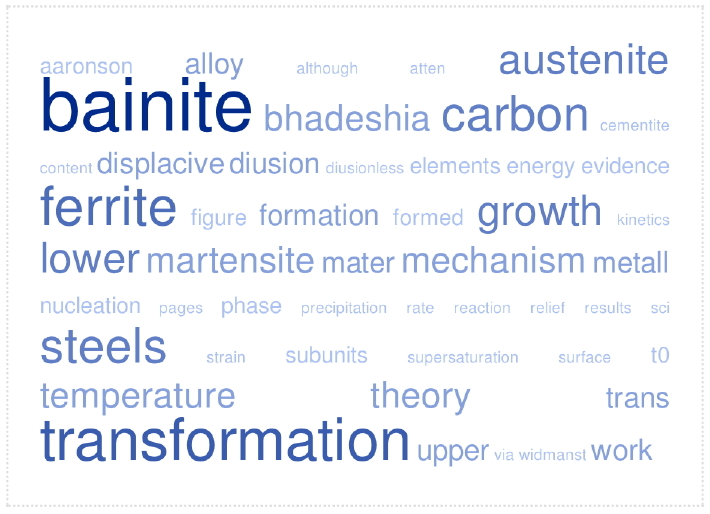

There has long existed a controversy regarding the formation of the bainite phase in steels. Nonetheless, following the clear identification of bainite in 1930, several characteristic features associated with the bainite transformation became well established. These features include: the classification into upper and lower bainite; the existence of a bainite-start temperature; and the incomplete-reaction phenomenon. Accordingly, two competing theories have been developed to explain the bainite transformation. However, no overriding consensus has been reached as to which is correct.
The first theory invokes a diffusion-controlled transformation, describing the growth of bainite via the propagation of `ledges' - a series of steps on the transformation interface. The second interpretation favours a displacive, diffusionless transformation. Bainite growth occurs via the autocatalytic nucleation and growth of successive sub-units or platelets. Over time, a wealth of techniques has been implemented in order to increase the understanding of the mechanism by which bainite forms. From the early approaches that involved thermodynamic and kinetic considerations; through detailed work on the crystallography of the transformation; to studies involving advanced characterisation techniques that focused on the distribution of atoms, etc. Some of the theories have been progressively adapted to new evidence and new concepts as they emerge. For example: the concepts of the T0 curve and of paraequilibrium transformation.
This work presents a chronological summary of the two theories of the bainite transformation, charting their progression and noting the variety of evidence both in support of and in contradiction to each viewpoint. The ‘bainite controversy’ is still debated by steel metallurgists today, although it has mostly been reduced to the question of whether or not bainitic ferrite initially forms with a supersaturation of carbon. This review gathers and evaluates some of the accumulated work in the hope that this question may finally be answered.
Materials Science and Technology, 9 (2013) 383-399.

| Envelope | Coefficients | low density steel | Hot | Oxidation |
| Satoh | FSW maps | Powder metallurgy | Solidification | X80 pipes |
| Mixed | Mn-TRIP | Nuclear growth | Maraging | Tetragonal ferrite |
| PT Group Home | Materials Algorithms |